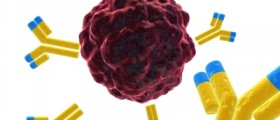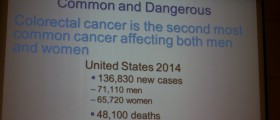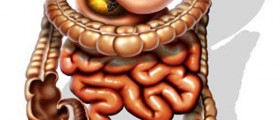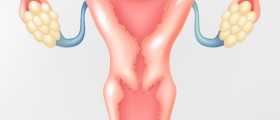
Stomach or gastric polyps are benign masses which tend not to occur very often. People may suffer from the stomach polyps without being aware of their presence. They are, therefore, most commonly found by accident. The treatment for stomach polyps basically depends on the type of polyp. Majority of stomach polyps are considered precancerous lesions and they need to be removed.
Symptoms and Signs of Stomach Polyps
As it has already been mentioned majority of stomach polyps do not cause any symptoms at all. However, in case that this benign tumor reaches certain size it may cause symptoms related to blockage of the certain openings. If polyps are situated near the esophagus the food may not enter the stomach and one suffers from frequent vomiting. Furthermore, large stomach polyps may also block the opening between the stomach and the duodenum. This blockage also causes frequent vomiting.
Large stomach polyps can also cause abdominal discomfort, pain and even tenderness if the upper abdomen is pressed. They are also rather suitable place for ulcer formation. The presence of ulcers may cause severe pain and in some cases bleeding.
Causes and Types of Stomach Polyps
Stomach polyps occur as a consequence of inflammation and similar damage of the mucous membrane of the stomach.
There are several types of stomach polyps and hyperplasic polyps, fundic gland polyps and adenomas are the most frequent ones. Hyperplastic polyps of the stomach occur due to chronic inflammation of the epithelial cells. They predominantly affect people suffering from gastritis. Hyperplastic polyps typically do not transform into malignant tumors. Transformation from benign into malignant from is only possible if hypertrophic polyps are larger than 3/4 inch. Fundic gland polyps originate from the glandular cells. They predominantly occur as a part of familiar adenomatous polyposis. They may rarely occur in people who do not suffer from this hereditary syndrome. If a person is suffering from familiar adenomatous polyposis, stomach polyps are highly likely to turn into malignant forms. And finally, adenomas originate from glandular cells of the inside lining of the stomach. They are rather rare and carry significant risk of becoming stomach cancer.
Treatment for Stomach Polyps
Diagnosis of stomach polyps is set after gastroscopy and biopsy of the polyp. The biopted samples are sent for pathohistological examination. Small stomach polyps, particularly if the pathohistological type of polyp is good and does not lead to malignant transformation, do not require any treatment at all. But they need to be monitored periodically.
Adenomas and polyps larger than 2/5 inch are routinely removed. This is performed endoscopically.

















Your thoughts on this
Loading...